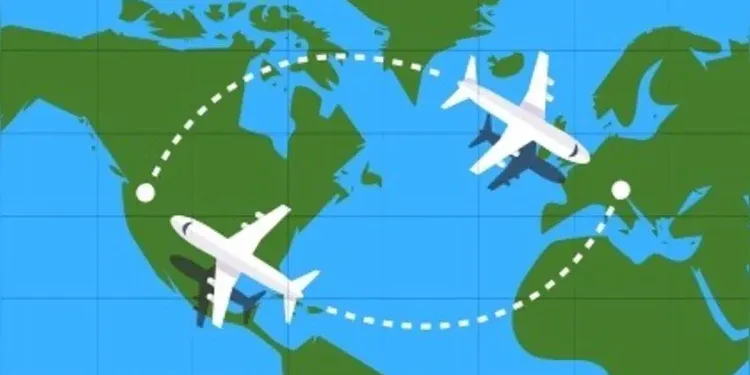Airfares for flights from Europe to the United States have fallen to rates not seen since before the Covid-19 pandemic. This drop is largely due to a significant slowdown in travel from Western Europe to the US, a trend expected to continue until at least next month, putting pressure on airlines’ profits on these crucial transatlantic routes.
Figures from the US National Travel and Tourism Office (NTTO), part of the US Department of Commerce, show that overall overseas arrivals to the United States were down 2.8% in May compared to a year ago. Western European travel saw the biggest hit, falling by 4.4% in May, while Eastern European travel actually rose by 4.6% over the same period.
Future bookings suggest these declines are set to persist. Aviation analytics firm OAG Aviation reports that total inbound bookings to the US for July are down a substantial 13% year-on-year.
Transatlantic airfares have been on the slide since the first quarter, with Europeans apparently rethinking trips to the US. This shift in sentiment has been linked to various factors, including recent geopolitical events and a stronger US dollar, which makes visiting the US more expensive for European holidaymakers. Travel from Western Europe to the US plunged by 17% year-on-year in March alone, according to the NTTO.
The competitive landscape is also pushing fares down. Average return economy airfares for over 50 routes from the US to Europe in the first quarter were down by an average of 7% year-on-year. Notably, prices for flights between Atlanta, Georgia, and London saw a remarkable 55% reduction, according to data from aviation analytics firm Cirium.
While American consumers have been increasingly hunting for bargains and waiting until closer to departure to book their holidays, the dwindling demand from Europe is another key reason for cheaper transatlantic travel. “Fewer seats filled by European travellers to the US, and a slower pace of growth in US outbound to Europe than last year, will tend to cast 2025 as a tougher year to make money on transatlantic routes,” explained Aran Ryan, director of industry studies at Tourism Economics, a subsidiary of Oxford Economics.
British holidaymakers and other European travellers heading the other way are also benefiting from the lower prices. Travel booking app Hopper reports that the cost of return tickets from the US to Europe this summer is down 10% compared to a year ago. Average fares of $817 (€709) per ticket are now in line with prices seen in the summer of 2019, before the pandemic.
Major European carriers are acknowledging these changing market conditions. Lufthansa CEO Carsten Spohr anticipates weaker demand in the third quarter, while Air France KLM CEO Ben Smith has noted a “slight pullback” in transatlantic traffic. Both airlines are considering price cuts to ensure their transatlantic flights remain full.
Despite the drop in European visitors heading west, some airlines are finding a silver lining in robust US outbound demand. Lufthansa and US carrier United Airlines report that an increase in bookings from US travellers flying to Europe is helping to offset the decline in Europeans flying in the opposite direction. United specifically noted a 6% fall in international bookings from Europe in the first quarter but highlighted that US-originating demand made up for this dip. Similarly, Delta Air Lines stated that 80% of its long-haul international demand comes from the US, and fares in this segment are “significantly higher” than elsewhere.
Lufthansa plans to step up its marketing for transatlantic flights towards American travellers to capitalise on this higher demand, even though Western European travel to the US did show a brief recovery, increasing by 12.1% in April before falling again in May.
With 4.3% more international flights scheduled to depart from US airports for international destinations this summer, according to Hopper, American Airlines CFO Devon May remains positive, stating in May, “We feel really good about the transatlantic market.”







